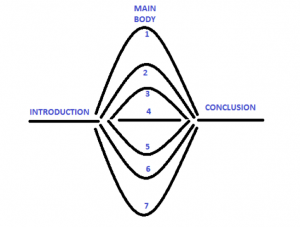Who needs to give presentations?
- Students
- Teachers
- Leaders in Organisations
- Employees
- Salespersons
- Scientist
- Engineers
NEARLY EVERYONE AT SOME POINT IN THEIR LIVES!
Why do we present?
- Communicate ideas / information from the source to the recipient – INFORM
- Make the audience see things as you (the speaker) see things or how you want them to see things – PERSUADE
Common mistakes (or 10 ways to ruin your presentation!)
- Cram your slides with numerous text bullet points and multiple fonts.
- Take a really long time to explain what your talk is about.
- Speak at great length about the history of your organization and its glorious achievements.
- Make sure you subtly let everyone know how important you are.
- Speak slowly and dramatically. Why talk when you can orate?
- Use lots of unexplained technical jargon to make yourself sound smart.
- Refer to your book / notes repeatedly. Even better, quote yourself from it!
- Sound as if you’re reciting your talk from memory.
- Don’t bother rehearsing to check how long your talk is running.
- Never, ever make eye contact with anyone in the audience.
Tips
- Prepare
- Structure your presentation
- Use Media to illustrate
- Body language – Voice
- Connect with audience
- Rehearsal
Prepare, prepare, PREPARE!
- Know your subject!
- Research all avenues / know your material
- Draft first (treat it as if it is your friend)
- Know your scope, know your audience
- Map out your thoughts before even the first slide is done
- Go early on the day (if able)
- Check the room beforehand (if able)
- Don’t get snagged on Audio Visual equipment pitfalls (cables, connectors, supplies, etc.)
- Have a soft copy as a backup of your talk and supplementary materials, in a thumb drive.
- Print your talk – for additional backup!
Know Your Audience
Find out as much as you can about your audience BEFORE you present to them.
- Who are they?
- Why are you standing before them?
- What do they want / expect?
- What do they need?
- If questioning, what are they asking?
Remember: the talk is about THEM... not about You!
Structure your Presentation
Structuring: – beginning – middle – end – visual / verbal indications of sequence of points

Weaving: linking points to experience/needs of audience, show benefits, link to other points
Structure your Presentation
- Adding support: supporting points, features, advantages, visual illustrations, examples
- Put Yourself into it: stating importance, use humour, ask questions if able, voice, body
Use Media
- Text (shape, size, colour, positioning, etc.)
- Pictures (+ jokes) Animations
- Videos
Creating Your Slides
Golden Rule of Slides Creation – there is none! But there are certain things to avoid:
- Too much text / text too small
- Giving them all the info at once
- Giving out your slides before you start???
- Using too many slides
- Reading the slides
- Too flashy
- Too bland
Unspoken Signals
- Clothing / way of dressing
- Body stance and facing
- Eye contact
- Hands – Presentation Strike Zone
- Movement about the room
- Fiddling with props / watch checking
- Breathing!
Let Them Hear YOU – the Confident YOU (Projecting Yourself)
- Allow audience to learn your accent
- Volume / Tone
- Pace (can vary it) / Pauses
- Choice of Vocabulary
- Humour / Jokes
Fielding questions – Answer me this… (1/2)
- Engage the questioner: listen-pause-credit
- Repeat back / verify what you heard
- Understand what the questioner wants / needs (What is their intent?)
- Thank for an interesting question
- THINK BEFORE YOU SPEAK (5 second rule)
- Be clear / speak slowly
- Watch your reactions (facial expressions / body language)
- Avoid side tangents / private conversations
- Admit when you don’t know the answer / DON’T FAKE IT
- Make yourself available at the end of the talk
- Bridge by asking question back
Rehearsal
For: timekeeping, body language, voice, pace, logical order, etc.
- Visit venue
- Ask friends’ feedback on delivery and content
- Time management
- Visual aids, ppt, etc.
- Other equipment?
- Reflect
Killer Presentations (in 5 easy steps)
- Frame Your Story
- Plan Your Delivery
- Develop Stage Presence
- Plan the Multimedia
- Putting It Together
Don’t worry!
Nobody can see how you feel!
Pretend to be confident (even if you’re not!).
- Everybody feels nervous
- Nobody can see how you feel – project confidence (even if you’re not!)
- Gain inner control – find few mins of quietness
- Breathe slowly and deeply
- Use nervous tension as a generator for force and dynamism
- Smile
- No one is out to get you!
Just before... final thoughts
You prepared as much as possible...
BUT something unpredictable happens! Go with the flow. Not everything will go according to your plan.
Take a deep breath and improvise.




 TOP
TOP
